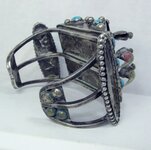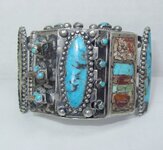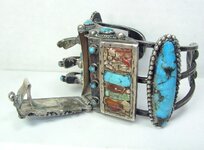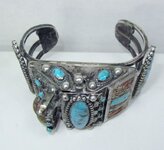Hi,
I would like to know if what this native American bracelet was used for. The front opens up and has a hidden storage compartment. It is missing some turquoise and one claw and I would like to have it restored, but was wondering if it would be worth the cost of fixing. The man I purchased it from said it was a medicine mans bracelet. Any help would be appreciated.



I would like to know if what this native American bracelet was used for. The front opens up and has a hidden storage compartment. It is missing some turquoise and one claw and I would like to have it restored, but was wondering if it would be worth the cost of fixing. The man I purchased it from said it was a medicine mans bracelet. Any help would be appreciated.








